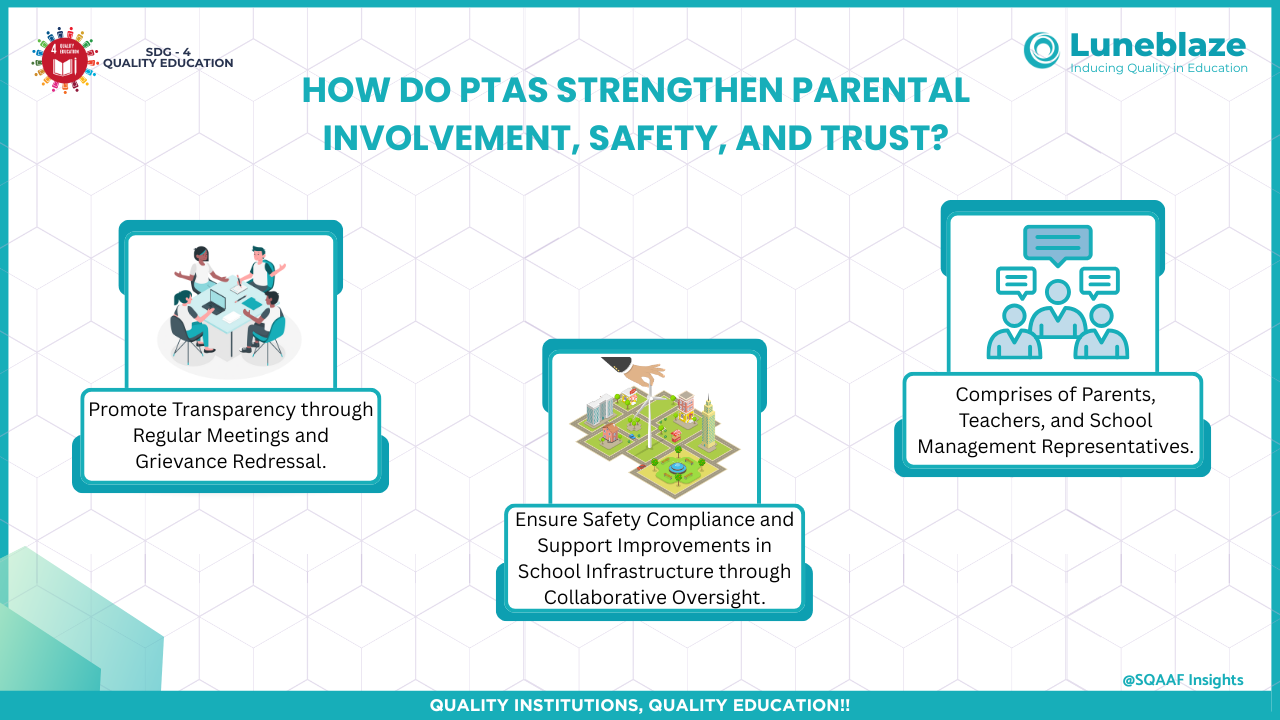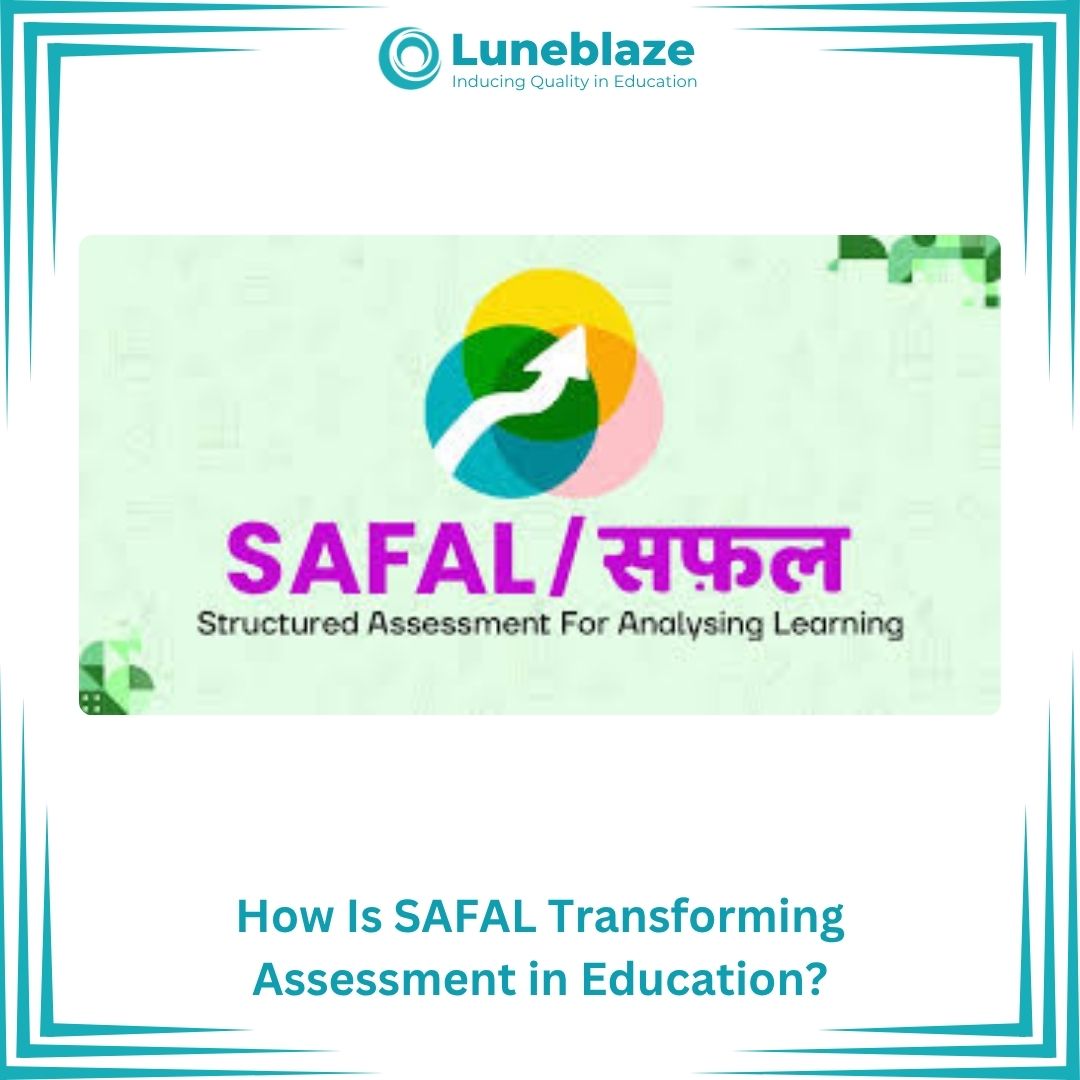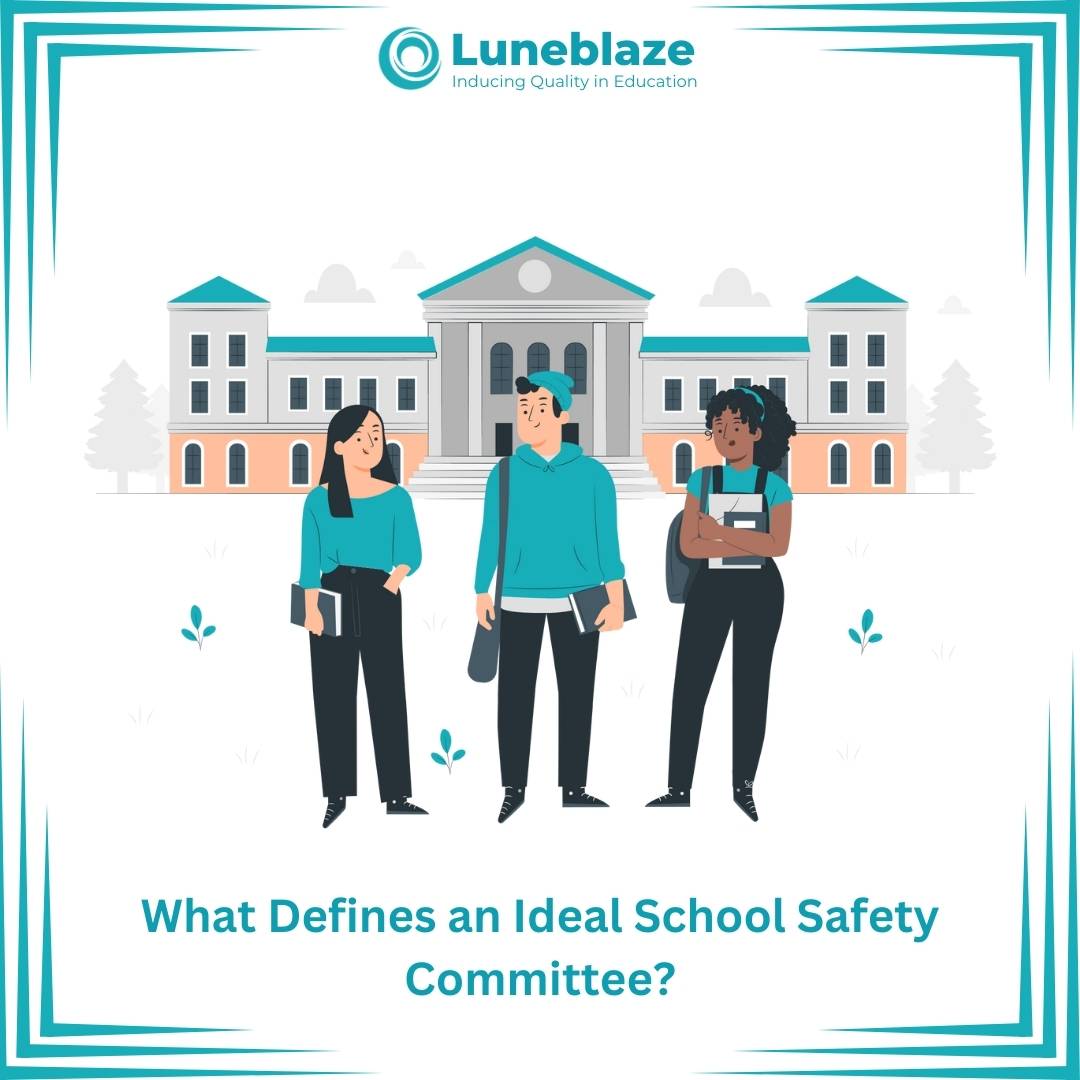How Do PTAs Strengthen Parental Involvement, Safety, and Trust?

May 02, 2025
The ringing of the school bell signals the beginning of another bustling day. Children rush to their classrooms, teachers prepare for their lessons, and the corridors echo with laughter and learning. But beyond academics, an equally vital aspect of school life unfolds—ensuring a safe and secure environment for every child. This responsibility does not rest solely on the school authorities; parents, too, play a crucial role. This is where Parent-Teacher Associations (PTAs) become an indispensable link, strengthening the safety and governance of schools.
The Role of PTAs in Ensuring School Safety
Under Section 21 of the Right to Education (RTE) Act, 2009, private schools are exempted from formulating School Management Committees (SMCs). However, this does not mean that parental involvement in school decision-making should be overlooked. Instead, these schools must make PTAs mandatory, as they serve as a bridge between parents and school authorities, fostering a collaborative approach to monitoring safety measures.
The importance of PTAs extends beyond just routine meetings and discussions. A well-structured PTA can contribute significantly to ensuring the safety and security of children in schools. This is especially crucial in private schools categorized under Section 2(n)(iv) of the RTE Act, 2009, which are mandated to establish PTAs as an alternative to SMCs. Additionally, CBSE's School Quality Assessment and Assurance Framework (SQAAF) emphasizes the formation of PTAs as a critical component of school governance, ensuring active parental participation in decision-making and safety oversight.
Suggested Model for PTA Composition
To ensure that the PTA functions effectively, it should have a well-balanced composition. Below is a suggested framework:
Single PTA Structure: Every school should have just one PTA, formed within the first month of the academic session.
Gender Representation: To promote inclusivity, at least 50% of the members should be women.
Parent Representatives: Two parent representatives from each level—pre-primary, elementary, secondary, and senior secondary—should be included. Parents of children with disabilities must also have representation.
Reserved Representation: Among parent members, 25% of the total strength should be reserved for parents of children admitted under Section 12(1)(c) of the RTE Act, which includes children from economically weaker sections.
Teacher Representation: One teacher from each level of schooling (pre-primary, elementary, secondary, and senior secondary) should be nominated by the principal.
Special Invitee: A member with expertise in school-related fields that contribute to overall school development should be included as a special invitee.
School Management Representation: At least one representative from the school management should be a part of the PTA.
Inclusivity: Adequate representation should be ensured for parents from disadvantaged categories.
Member Replacement Policy: If the child of a parent representative leaves the school mid-session, another parent or guardian from the same class should be inducted into the PTA within a month.
Transparency: The school management should display and upload the names of PTA members on the school website and notice board for transparency.
Terms of Reference for PTAs
For a PTA to be truly effective, clear terms of reference should be established. These include:
One-Year Term: The PTA should function for one academic year, ensuring continuity while allowing fresh perspectives each year.
Collaboration with School Management: While PTAs and SMCs have distinct roles in private schools, their close collaboration can help effectively implement the school safety guidelines of National Commission for Protection of Child Rights (NCPCR)
Parental Involvement in Decision-Making: The PTA should serve as a platform for discussing safety measures, infrastructure improvements, and student welfare initiatives.
Monitoring and Reporting: The PTA can act as an inspector, ensuring compliance with safety norms, handling grievances, and bridging communication gaps between parents and school authorities.
The Impact of an Active PTA
A well-structured and proactive PTA can make a significant difference in a school’s environment. By fostering a sense of shared responsibility, PTAs encourage active parental engagement in their children's educational journey. They empower parents to voice concerns, contribute ideas, and collaborate with teachers and school management to create a nurturing space for students. The CBSE SQAA Framework further reinforces the importance of PTA-driven initiatives in enhancing school safety and quality standards, ensuring that schools operate transparently and efficiently.
Moreover, an active PTA enhances trust between parents and schools, leading to improved communication, better grievance redressal mechanisms, and a stronger commitment to safety protocols. From organizing safety awareness programs to ensuring regular audits of school premises, the role of a PTA extends far beyond just parent-teacher meetings. CBSE SQAAF recognizes PTAs as a vital governance tool that supports schools in meeting accreditation benchmarks and quality assurance measures.
As schools continue to evolve, the need for robust safety mechanisms becomes increasingly essential. Making PTAs mandatory in private schools is a step in the right direction. By bringing together parents, teachers, and school management, PTAs ensure that children’s well-being remains a shared priority. Schools that foster strong parental engagement not only benefit from better governance but also create an environment where every child feels secure and supported.
Strengthening PTAs is not just about fulfilling a legal requirement—it is about fostering a culture of care, responsibility, and proactive involvement. The future of education is not solely dependent on curriculum and pedagogy but also on how well schools safeguard their students. By encouraging collaboration, transparency, and accountability, PTAs can transform schools into safer, more inclusive spaces where learning thrives without compromise.
To support these efforts, Luneblaze provides a comprehensive AI-enabled end-to-end solution to schools for all their accreditation criteria needs, be it documents & evidence creation, self-assessment filing support on the CBSE SQAAF portal, faculty trainings, audits, and consultancy support. With the help of Luneblaze’s AI-enabled solutions, institutions can organize and manage all their data related to accreditation and assessments like SQAAF for schools.
Together, let’s raise educational standards. Partner with Luneblaze for SQAAF success. Reach out: sqaa@luneblaze.com
Trusted by
100+
Institutions
worldwide
since 2017
Get started with Accreditation Excellence
Explore how our AI-enabled accreditation solution simplifies the accreditation journey









